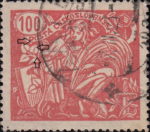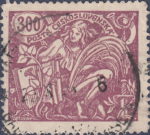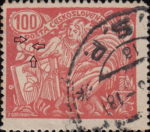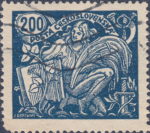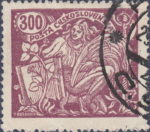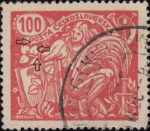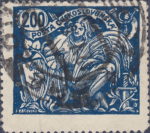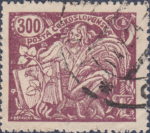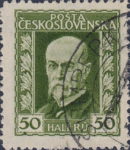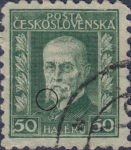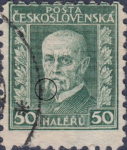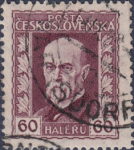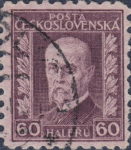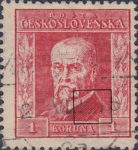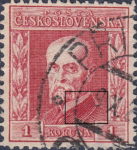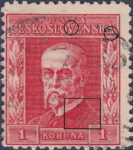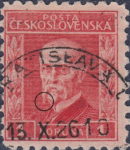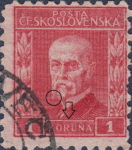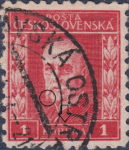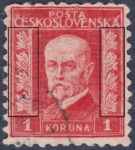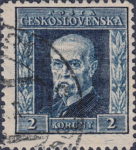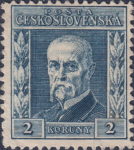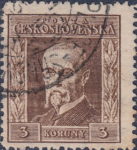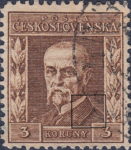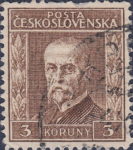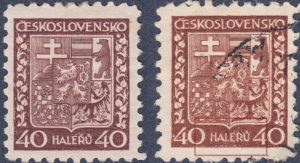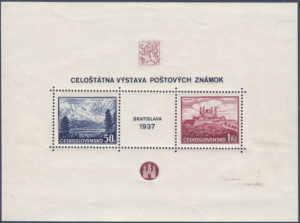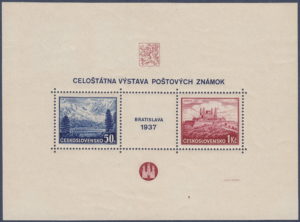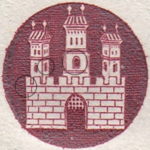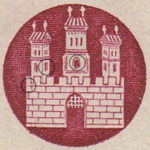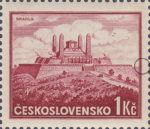Czechoslovakia – Varieties of Postage Stamps 1918-1939
June 1920. Definitive issue: Economy and Science.
| TYPES | ||
|---|---|---|
| 400 haléřů | ||
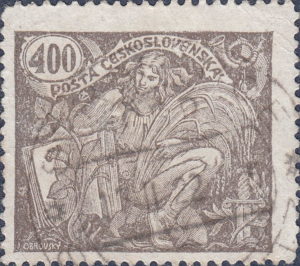 |
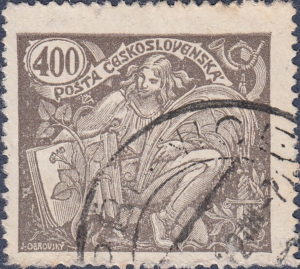 |
Type I:
Type II:
|
| Type I | Type II | |
January/February 1923. Definitive issue: Economy and Science. Printed in letterpress in three types.
March/September 1920. Definitive issue: president Tomáš Garrigue Masaryk. Letterpress, perforation 13¾.
| TYPES | |
|---|---|
| 125 haléřů | |
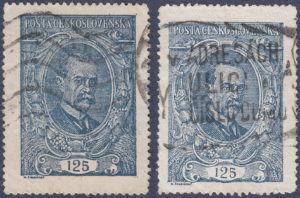 |
Type I:
Type II:
|
| UNLISTED VARIETIES | ||
|---|---|---|
| 125 haléřů | ||
| 1 | White spot on wheat near the right corner. | 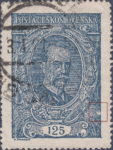 |
| 500 haléřů | ||
| 1 | Big spot below Masaryk’s right eye. | 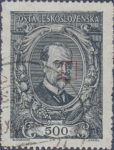 |
1923/1927. Definitive issue: president Tomáš Garrigue Masaryk.
1926/1927. Definitive issue: Landscapes.
| TYPES | |
|---|---|
| 3 koruny | |
 Types I and II |
Type I:
Type II:
|
1929/1937. Coat of arms.
2 January 1930. Definitive issue: president Masaryk. Line engraving, perforation 9¾.
| TYPES | |
|---|---|
| 50 haléřů | |
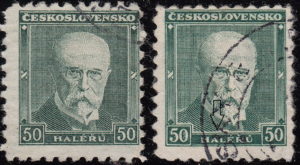 |
Type I:
Type II:
|
2 January 1932. Definitive issue: Landscapes. Line engraving, perforation 9¾.
| CONSTANT VARIETIES | |||
|---|---|---|---|
| 5 korun | Field number | ||
| I | 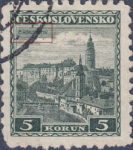 |
Double print of inscription Č.KRUMLOV. | 32, plate 1A |
26 April 1937. Definitive issue: president Eduard Beneš. Line engraving, perforation line 12½.
| TYPES | |
|---|---|
| 50 haléřů | |
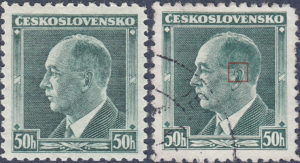 |
Type I (plates 1-1A):
Type II (plates 2-2A):
|
24 October 1937. Philatelic exhibition in Bratislava. Line engraving, perforation comb 12½.
18 January 1939. Opening of Slovak parliament in Bratislava. Line engraving, perforation line 12½.
| OVERPRINT TYPES | |
|---|---|
| 300 haléřů on 10 koruny | |
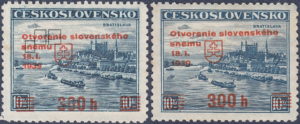 |
Type I:
Type II:
|
References
Bibliography
-
- Jan Karásek, Antonin Michele, Bohuslav Svoboda: Monografie Češkoslovenských Známek, Díl II. – Legionářské 1919 – hospodářstvi a věda 1923, Prague 1971.
- Jan Karásek, František Žampach: Monografie Češkoslovenských Známek, Díl III. – Výplatní známky 1923 – 1939, Prague 1979.
- Michel Osteuropa 2005/2006, Schwaneberger Verlag GmbH, ISBN 3-87858-684-1

